I recently came across this book (which is free) and was blown away. Lean is a philosophy of eliminating waste in our daily lives, at work or at home, to improve how we get things done. There was a lot of overlap with a lot of what we hold dear as tiny housers. It’s primarily oriented to manufacturing, but has a lot of practical applications in any workplace and even in our homes.
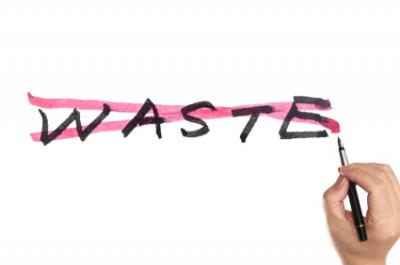
What struck me was that 2 second lean was approachable. I’ve read a lot on Six Sigma, Agile, Scrum, and other systems, but this just clicked better. The method had a lot of very simple lessons and application was super easy. A lot of the techniques employed are things that we already do as tiny housers, but some new ones as well. There some practices that really stuck out for me.
Here are a few key terms before we get into it all, most are from the Japanese who developed a lot of this stuff:
Kaizen: is a Japanese term continuous improvement. Though slow and steady improvements we attain a better way of life. Example: when we notice something bothers us constantly, we fix it.
Poka Yoke: this term is designing things so we can’t make mistakes or minimize them drastically. It also is design that when a mistake is made, it jumps out at us so we can identify it. Example: a front load washer will not start until the door is fully closed, preventing spills.
Kanban: is a technique we provide cues to remind us to refill something, buy another of an item etc so we don’t run out. Example: I take a bright colored piece of paper, cut it to the size of a toilet paper roll and place it on top of my last one. When I use the TP, I suddenly see the bright paper, I know I need to order more.
Visual Controls: This is employing marking and other visual cues to help people understand what’s going on at a glance. The ideal situation is to be so clear a person could walk in and find anything or understand the flow without external direction. Example: label bins so people know what is in them without having to look inside.
Lean is all about seeing and eliminating waste. In our own lives we want to remove waste to make our lives easier, to give us more time to do things we’d rather do, to improve the work we do, and enjoy things more when we are relaxing.
There are 7 types of waste
At Work At Home
- Defects: we make a mistakes
- Overproduction: we do extra work to fix know problems over and over again
- Waiting: When we sit around waiting for someone to do something
- Missed Potential: We don’t use the best person for the job
- Excess Inventory: We have to much stuff, which leads to clutter and stress
- Wasted Motion: we don’t have what we need close by or at hand
- Defects: Time consuming mistakes
- Overproduction: We don’t fix something that bothers us
- Waiting: Wasting time on things
- Missed potential: We don’t empower others to help
- Excess inventory: We have clutter
- Wasted Motion: We are constantly walking to get something
Kaizen at home:
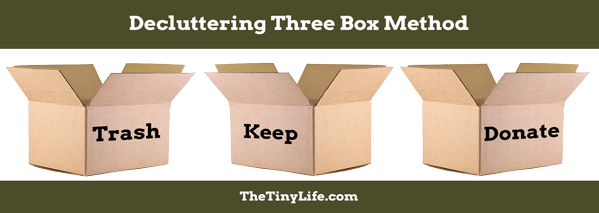
When you are decluttering an areas have three boxes handy: one for trash, one box for things you want to keep, and a third box for things to donate. When you declutter an area pull everything out. While you’re in your downsizing process, consider having a set of general boxes so when you find something that needs to be dealt with it has a place to go right away.
Poka Yoke at home:
Think about how you can make sure things get back to where they’re supposed to be, to make sure people have the tools at hand to do the job and error proof things as much as you can.
Kanban at home:
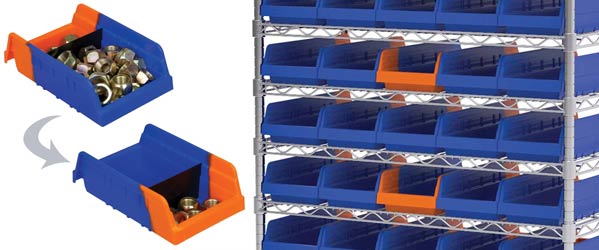
These are bins that are mostly blue, but one end is red, an adjustable divider lets you set your threshold. Let’s say you have 6 cans of soup, you’d put four in the blue half and then two in the red half. Start with the blue side out, but when you run out of soup in the blue half, you’ll be forced to flip the bin to the red side. You’ll have two more soups to go, but your bin now signals that you need to get more soup because you look for the red.
Visual controls at home:
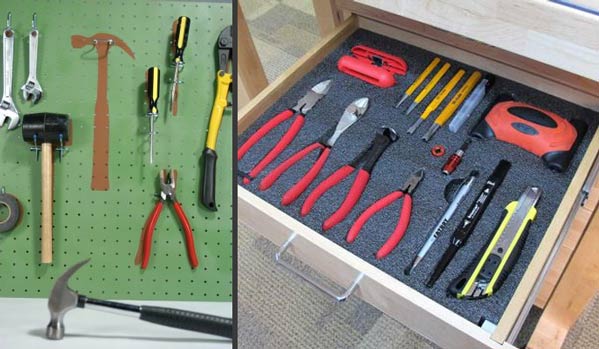
Organizing things with visual controls will let you know exactly what goes where and identify quickly what is missing or out of place.
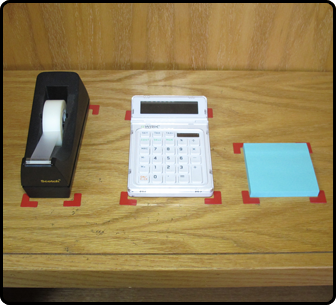
Taping spots for things will show people where things go.
Kanban Board in real life:

So for those of you who want to check the book out, it’s called 2 Second Lean and it’s free in a pdf and audio. You can check it out here: read 2 second lean here
Your Turn!
- How do you eliminate waste in your life?
- How do you make small improvements in your life?
Leave a Reply